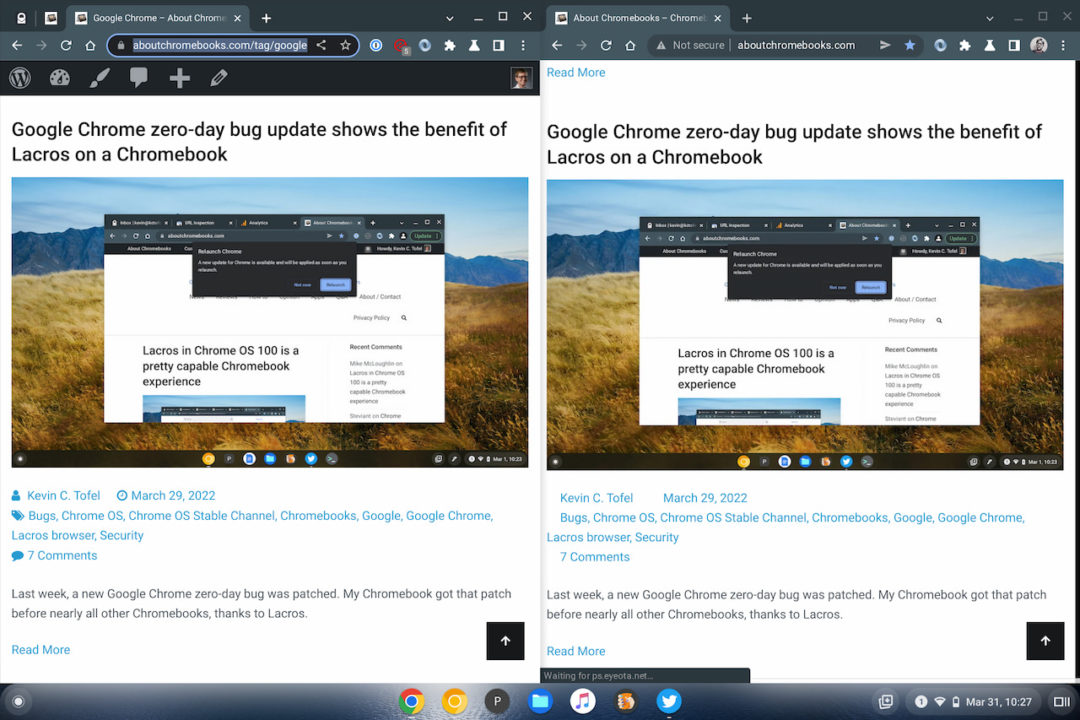Tomorrow will be four years to the day that I started this site.? And every day since then I’ve kept coverage to Chrome OS and Chromebooks, along with the occasional bit about Chromebases or Chrome OS tablets. As Google’s effort to unbundle the Chrome browser from the Chrome OS platform nears completion, I think it’s time to include more Google Chrome browser coverage.
That effort I mention is Lacros, which stands for Linux And ChRome OS. I know I’ve written about it a bunch lately, but I’m not sure that the majority of Chrome OS users are truly familiar with it.
Chrome OS vs Google Chrome
To help with that, I documented what Lacros is compared to Google Chrome and Chrome OS here. So I won’t rehash it now.
Suffice it to say that the current default browser in Chrome OS is getting decoupled from the platform. In its place will be the Linux version of Chrome, which I’ve been using full time on my Chromebook for several weeks. It’s essentially the same experience.

Since the default Chrome OS browser will be a separate application, running on a virtual machine, software updates on Chromebooks will change a little.
Chrome OS updates will happen every four weeks, as they do now. But, once the Chrome browser is pulled out of the operating system, it can get updates at any time. And I think it makes sense to share information on those updates, just as I do with Chrome OS.
The benefits of Google Chrome as a separate Chromebook app
A perfect example is the recent high severity Google Chrome bug from last week.
It was fixed in the browser for Windows, macOS, and Linux then pushed out to those devices. Chromebooks and other Chrome OS devices got it a few days later because it required a full-blown Chrome OS update. Since I’m actually using Lacros on my Chromebook, I was patched right away.
From my perspective, do I cover that update twice: Once for Chrome OS devices and once for the Chrome browser? That seems silly, which is why I didn’t.
But there will be times in the future when something changes in Chrome OS that doesn’t affect the browser or vice versa. And I’ll want to cover both of those situations, assuming they’re important enough to cover.
On a related note, there are two sets of experimental flags on my Chromebook. One set is for Chrome OS and one is for the Chrome browser. Each has its own different settings as well, as shown below.

So again, expanding the site to include more Google Chrome news bits, tips, updated features, etc… will simplify things.
At least, that’s how I’m thinking about it. However, I don’t want to waste a reader’s time.
Think it over and let me know your thoughts in the comments. I already created a Google Chrome tag on the site in anticipation of this. That doesn’t mean I have to use it going forward though, so chime in and tell me what you think.

